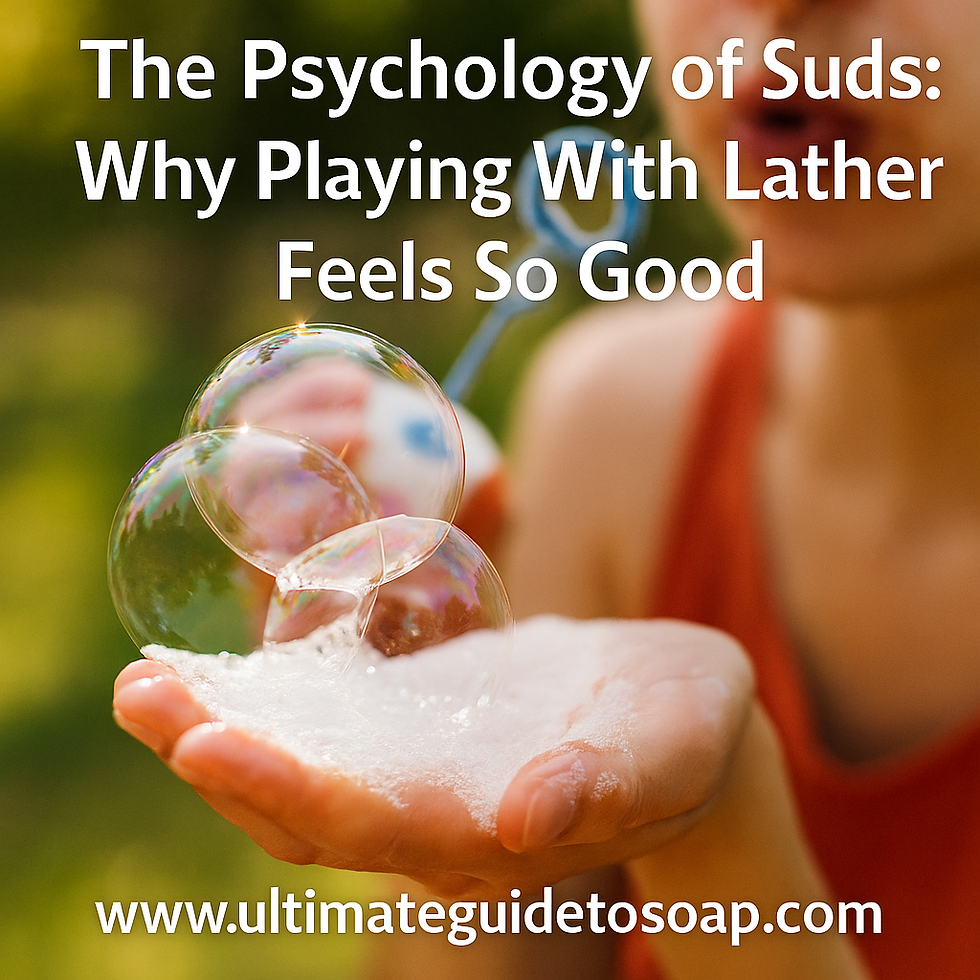Titanium Dioxide Is Not a Brightener—It’s a Transformer | Why You’re Probably Using It Wrong (and How to Use It Right)
- ultimatehpsoap
- Jul 19
- 4 min read
Updated: Jul 22

It’s one of the most used soap additives in the world. Titanium dioxide (TD) shows up in bright white bars, rainbow swirl batches, rustic farm soaps, neon embeds—you name it. And if you’ve ever read a tutorial that called it a “color brightener,” you're not alone. But here’s the thing: Titanium dioxide doesn’t brighten colors—it dilutes them.
Let’s get into the science, the soap theory, and how to use TD strategically instead of automatically.
What Titanium Dioxide Actually Is
Titanium dioxide (TiO₂) is a white pigment used in everything from paint and sunscreen to pharmaceuticals and food. In soap, it’s used to make the base appear more white or to “lighten” other colorants.
But what’s happening chemically?
TD is not a color enhancer. It’s a light-scattering agent. That means it makes things appear whiter or pastel by reflecting and diffusing light—not by increasing the vibrancy of the colorant it’s mixed with.
So when we think we're "brightening" a soap color, what we're actually doing is reducing its intensity by increasing the reflection of ambient light. TD is often mistaken for a vibrancy tool, but in reality, it's more like the white paint on an artist's palette—capable of completely changing the tone of a color, not just lifting it.
Color Theory 101: Mixing with White
Let’s talk pigment math:
Red + White = Pink
Blue + White = Baby Blue
Green + White = Mint
Orange + White = Peach
What do these have in common? They’re all pastel versions of their original colors.
When you add titanium dioxide to a colored soap batter, you’re not “brightening” it—you’re muting it. You’re removing saturation and replacing it with white. So if your neon pink suddenly looks like strawberry yogurt… now you know why.
This is where the distinction becomes important for soap makers: if you're trying to make your colors more vibrant, adding white is counterproductive.
The Chemistry of TD in Soap
Let’s zoom in a bit more.
Titanium dioxide is an insoluble compound, which means it doesn’t dissolve into your soap—it disperses throughout it as fine particles. These particles are incredibly effective at scattering visible light, especially the blue and violet wavelengths. That’s what gives it such an intensely white appearance.
When dispersed well, TD can create a smooth, opaque finish. When under-mixed, you may see drag marks, clumps, or tiny white spots.
But here’s the big takeaway: TD doesn't increase the saturation or depth of color. It simply blocks out anything behind or within the soap by overwhelming it with reflected light.
Common Misconceptions
“It makes colors pop.”
Nope. It softens them. If you’re using micas or pigments that are already vibrant, TD may dull them into pastel versions. Instead, use TD only when your design needs opacity or softness.
“It neutralizes all discoloration.”
It helps—but not always. If your fragrance oil contains a high percentage of vanillin or natural sugars, TD may only mask the discoloration temporarily. Over time, the base color may still darken.
When to Use TD (and When Not To)
Let’s simplify it.
Use TD When:
You want a white or pastel base
You’re layering light and dark colors and want contrast
You need to mask minor discoloration
You want to create a “milk” or “cream” aesthetic
Avoid TD When:
You’re using neons or bold micas and want vibrancy
You want true transparency in glycerin-based soaps
You’re doing oil-infused natural color designs
You’re going for high saturation or “glow”
Water vs Oil Dispersed TD
TD can be pre-mixed in either oil or water—but how you disperse it matters, and which product you purchase. Some TD's are manufactured specifically for oil dispersion and others for water.
Oil dispersions tend to blend more smoothly into cold process soap and prevent clumping.
Water dispersions are more compatible with hot process and can help reduce glycerin rivers.
Hot sugar water offers even better performance in HP. It keeps the soap fluid, disperses TD evenly, and boosts lather while preventing speckling.
Whatever you use, make sure to strain your dispersion to avoid drag lines or clumps.
Natural vs Treated TD
There’s some controversy over titanium dioxide in “natural” products. So let’s clarify:
Most TD used in soap is cosmetic grade, non-nano, and safe for rinse-off products. It's extremely stable and chemically inert, which means it won't react with your other ingredients.
If you're aiming for a certified "natural" label, make sure your supplier provides documentation. Some TDs are coated or treated in ways that don’t meet natural standards—but most are still soap-safe and skin-safe.
Summary: Use It Like a Pro
Titanium dioxide isn’t a color enhancer—it’s a transformer. When you understand that it pastelizes and blocks, rather than boosts, you can make smarter formulation choices.
Ask yourself:
Do I want opacity or vibrancy?
Am I trying to lighten, cover, or make a color pastel?
Am I blending TD with a bold pigment that might get muted?
If you're reaching for TD out of habit, it may be time to re-evaluate. Your soaps will be more vibrant, more strategic—and more you.
Want to Deepen Your Soap Knowledge?
Ready to dive deeper into formulation, design, and the chemistry of ingredients? Check out these books that break it all down:




Comments